10 Steps to a Successful CMMS Implementation
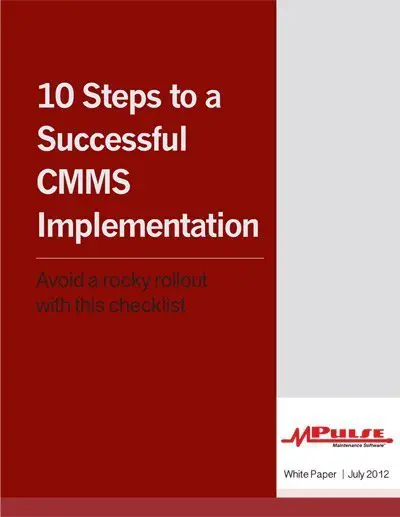
Avoid a rocky CMMS rollout with this CMMS implementation checklist.
CMMS (Computerized Maintenance Management System) technology has proven its ability to enhance business performance time and time again.
However, the path to effective CMMS implementation is not always easy—complexities often arise as a result of trying to align an entire company behind the concept..
You can find the success that comes from leveraging maintenance and asset data to the fullest measure by following these 10 steps to a successful CMMS implementation…
Top 3 Signs You Need Life-Cycle Analysis
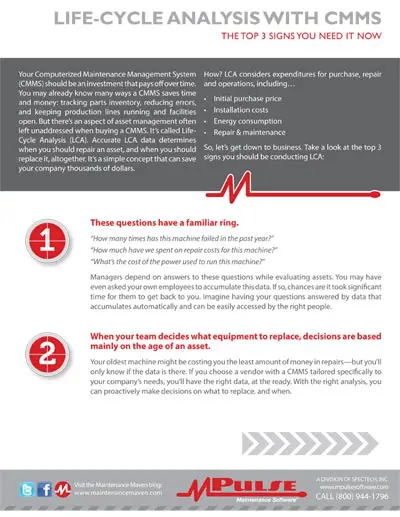
Your CMMS should be an investment that pays off over time.
You may already know many ways a CMMS saves time and money: tracking parts inventory, reducing errors, and keeping production lines running and facilities open.
But there’s an aspect of asset management often left unaddressed when buying a CMMS. It’s called LifeCycle Analysis (LCA).
Accurate LCA data determines when you should repair an asset, and when you should replace it, altogether.
It’s a simple concept that can save your company thousands of dollars. How?
Avoid a CMMS Implementation Fail
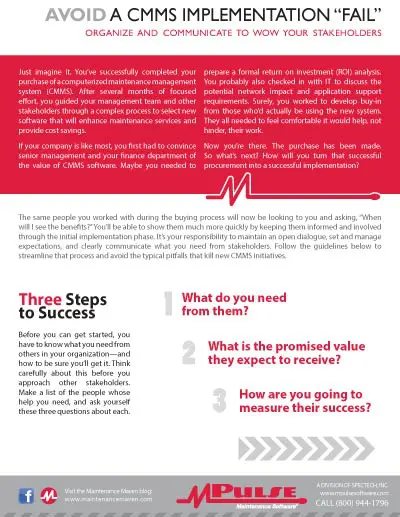
Do you know what steps to take to avoid an implementation disaster? Learn how to be hero instead of a zero with your new system.
Organize and Communicate to Wow Your Stakeholders
You’ve successfully completed your purchase of a computerized maintenance management system (CMMS).
If your company is like most, you first had to convince senior management and your finance department of the value of CMMS software.
Now you’re there. The purchase has been made.
So what’s next? How will you turn that successful procurement into a successful implementation?
Software as a Service (SaaS): Always The Best Way to Buy?
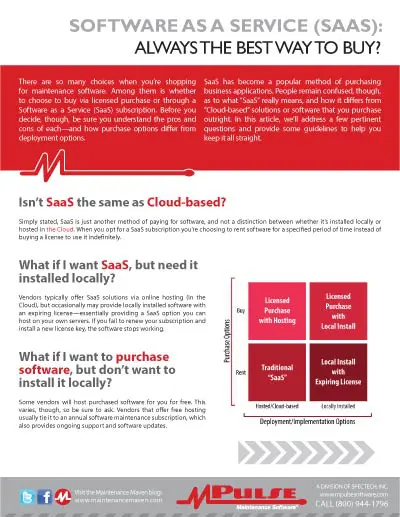
Is it always a good idea to rent software (also known as SaaS), or are there benefits to purchasing it outright? Learn the pros and cons.
There are so many choices when you’re shopping for maintenance software.
Among them is whether to choose to buy via licensed purchase or through a Software as a Service (SaaS) subscription.
Before you decide, though, be sure you understand the pros and cons of each—and how purchase options differ from deployment options.
Here’s a few pertinent questions and some guidelines to help you keep it all straight.
Five Ways CMMS Can Save You Money
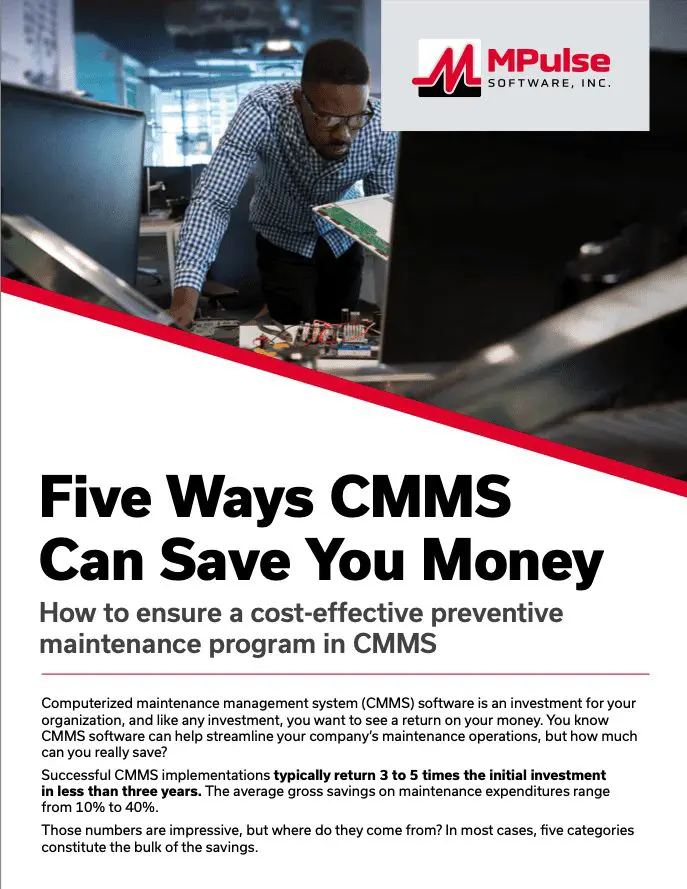
Show me the money!
Computerized maintenance management software (CMMS) is an investment for your organization, and like any investment, you want to see a return on your money.
You know computerized maintenance management software can help streamline your company’s maintenance operations, but how much can you really save?
Successful CMMS implementations typically return 3 to 5 times the initial investment in less than three years. The average gross savings on maintenance expenditures range from 10% to 40%.
Those numbers are impressive, but where do they come from? In most cases, five categories constitute the bulk of the savings.
Use Your CMMS Power Wisely

Maintenance data is powerful stuff. A CMMS can multiply that power exponentially.
Like any power, though, it’s most beneficial when used carefully and judiciously. If you try to apply it all at once, disaster ensues.
So how can you keep your reporting simple and focused on the questions that matter most to you?
Our most successful customers focus on getting the basics right first, with simple processes and reporting, before they move the throttle to “full power.”
Learn how.
CMMS By The Numbers
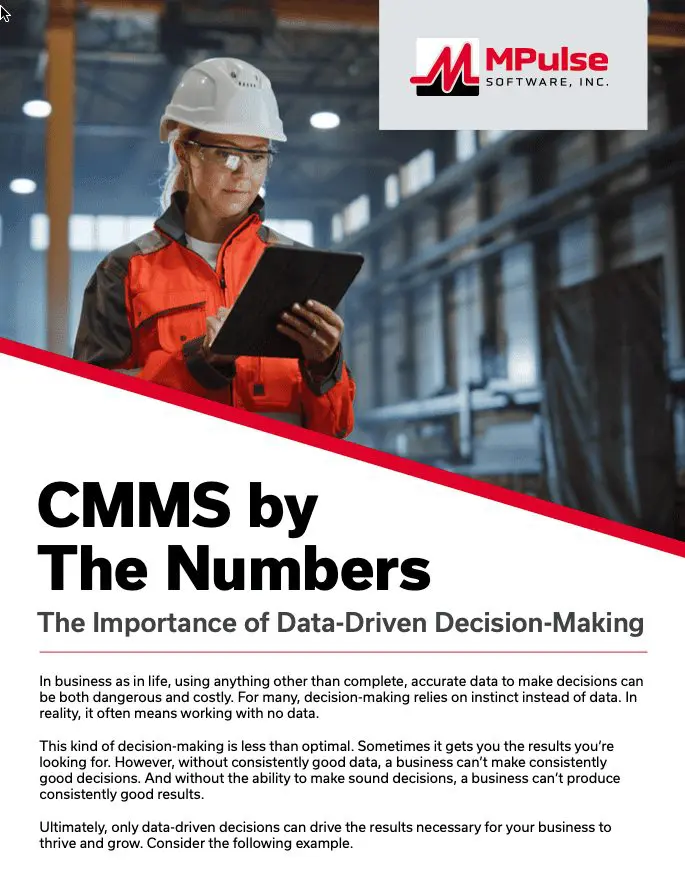
Don’t rely on intuiting the right answers for your critical business decisions. Your CMMS is a treasure trove of valuable information.
Without consistently good data, a business can’t make consistently good decisions. And without the ability to make sound decisions, a business can’t produce consistently good results.
Ultimately, only data-driven decisions can drive the results necessary for your business to thrive and grow.
Ask yourself whether it’s possible to support your decisions with numbers. You’ll quickly see the results in the most important place of all—your bottom line.
What are Your Pain Points?
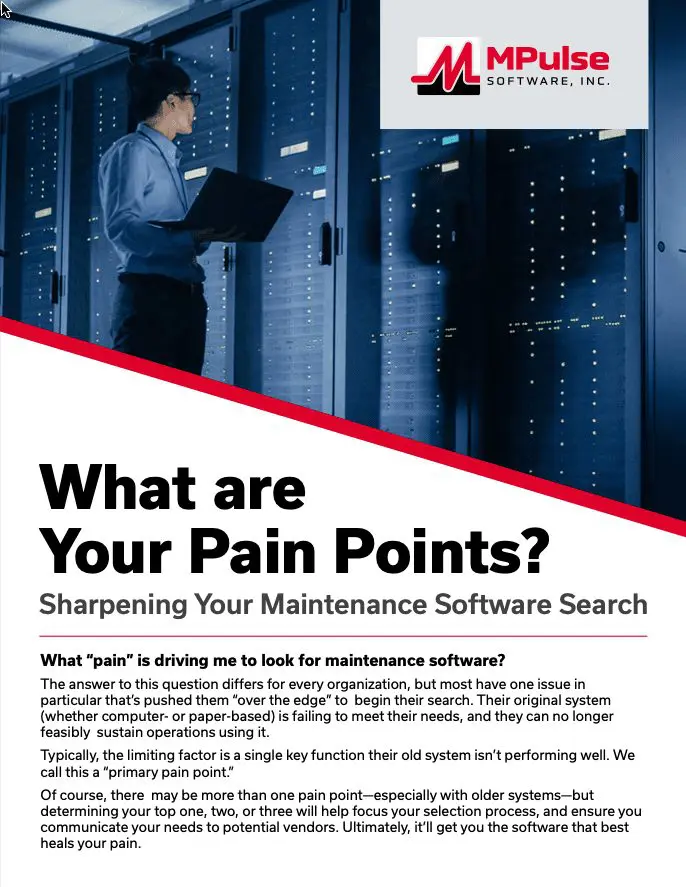
What’s driving you to search for CMMS software?
The answer to this question differs for every organization, but most have one issue in particular that’s pushed them “over the edge” to begin their search. Their original system (whether computer- or paper-based) is failing to meet their needs, and they can no longer feasibly sustain operations using it.
Typically, the limiting factor is a single key function their old system isn’t performing well. I call this a “primary pain point.” Of course, there may be more than one pain point—especially with older systems—but determining your top one, two, or three will help focus your selection process, and ensure you communicate your needs to potential vendors. Ultimately, it’ll get you the software that best heals your pain.
Simple Preventive Maintenance Can Boost PM Effectiveness
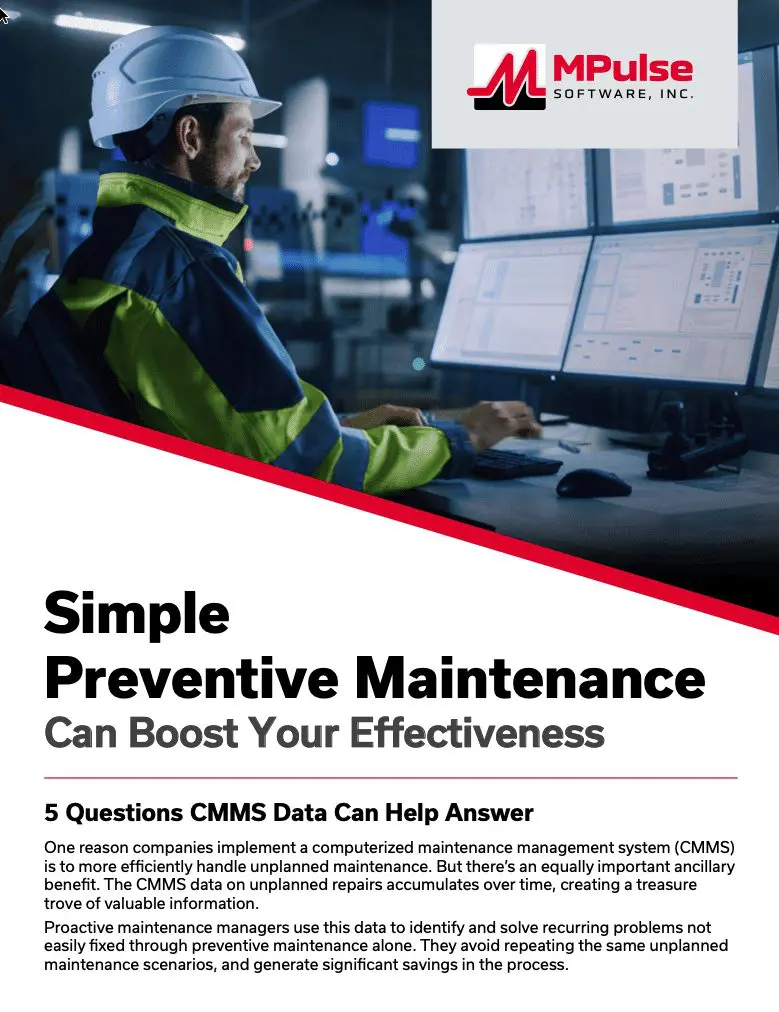
One reason companies implement a CMMS is to more efficiently handle unplanned maintenance.
But there’s an equally important benefit. The CMMS data on unplanned repairs accumulates over time, creating a treasure trove of valuable information.
Proactive maintenance managers use this data to identify and solve recurring problems not easily fixed through preventive maintenance alone.
They avoid repeating the same unplanned maintenance scenarios, and generate significant savings in the process.
Learn how to identify these “invisible”problems—and to make the repairs needed before they result in more expensive unplanned repairs and production downtime.
What to Look for in Maintenance Management Software
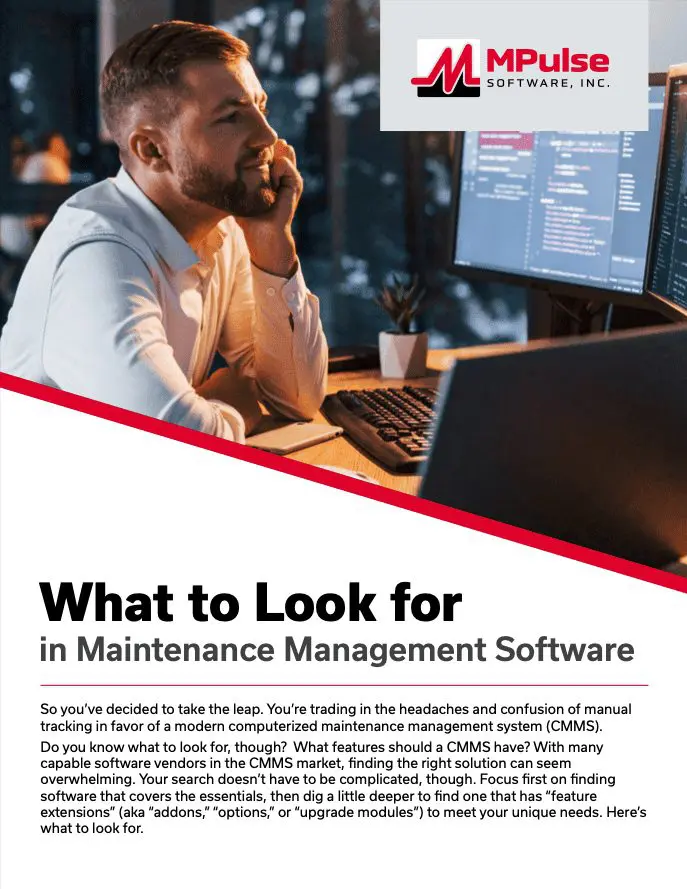
Understand the basic and advanced features of contemporary maintenance management software to guide your software search.
So you’ve decided to take the leap. You’re trading in the headaches and confusion of manual tracking in favor of a modern computerized maintenance management system (CMMS).
Do you know what to look for, though? What features should a CMMS have? With many capable software vendors in the CMMS market, finding the right solution can seem overwhelming.
Your search doesn’t have to be complicated, though. Focus first on finding software that covers the essentials, then dig a little deeper to find one that has “feature extensions” (aka “addons,” “options,” or “upgrade modules”) to meet your unique needs. Here’s what to look for.

